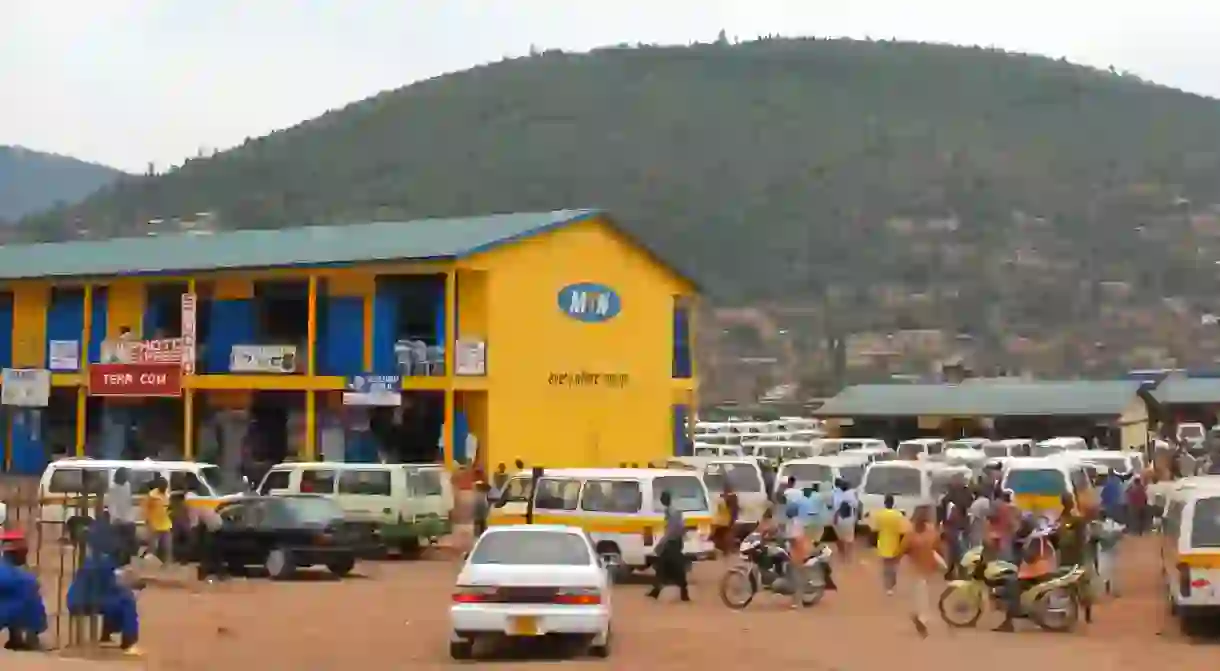How to Navigate Transport in Rwanda

Rwanda, an East African country known best for its fruity coffee, volcanic landscapes, and endangered mountain gorillas, should be on the bucket list of every adventurous traveller. Fortunately, Rwanda boasts a really reliable public and private transit system, making traversing the land of a thousand hills all the easier. Get ready to hail your next moto-taxi or minibus, and start exploring.
Moto-taxi
Moto-taxis, while not always the safest form of transit, are definitely the most fun. Motorcycle drivers zoom around Rwanda’s major cities and towns, congregating at popular bars, bus stops, and restaurants while looking for passengers. Stick your hand out when you see a Moto whizz by, and after telling them where you’re going, negotiate a good price (this could range from 300 to 1,500 Rwandan Francs depending on distance).
Local tip: Most moto drivers provide helmets for their passengers, but make sure your helmet buckles and fits properly. Also, if your moto driver seems a little out of it or drunk, skip them and search for another one. Safety first!

Private taxi
Private taxis, while more expensive than Moto-taxis, are the safest private option Rwanda has to offer. Unlike New York and London, you will rarely come across a taxi just driving down the street looking for passengers. Instead, if you’re in need of a taxi, ask your hotel concierge to call one or make your way to a busy restaurant, bar, or destination — Kimironko Market, Papyrus, Nyabugogo Bus Terminal, Kigali City Tower, and the airport all have loads of taxis parked and looking for passengers.
Local tip: Negotiate your taxi price before committing to a ride, and depending on the distance you shouldn’t have to pay more than 15,000 Rwandan Francs.

Local bus
Bus stations are located in all of Rwanda’s major cities and towns, with buses driving both local and national routes. Local buses crisscross Kigali, Musanze, Gisenyi, Kibuye, Cyangugu, and Butare, making their way to each neighbourhood throughout the day. To hail a local bus, find one of the ubiquitous bus stops around the city — a small stand with a bench and crowds of people characterise these stops best. A local bus will cost between 200 and 400 Rwandan Francs.
Local tip: Tell your bus driver and his assistant what stop you want to get off at, and knock on the window as a reminder when its your turn to exit.

National bus
Every city or town has a bus stop or terminal for the cross-country national buses. For national buses originating in Kigali, head to the Nyabugogo Bus Terminal. Nyabugogo, while loud, busy, and at times overwhelming, is really well organised. Bus companies surround the parking lot, and list their destinations on posters in front of the ticket counter. Buy your tickets from the companies themselves the day of your trip, as scam artists will generally descend upon lost looking travellers the moment they step into the terminal. After purchasing your tickets, the company will guide you to their bus that’s generally parked right in front of the office. Buses leave for Kigali’s major cities and towns every thirty minutes or so until late afternoon, and pretty much every company in Nyabugogo is reliable — Virunga Express and Volcano Express are two of the best.
Local tip: Make sure to get there on time as, unlike a lot of the country’s surrounding East African neighbours, Rwandan buses are punctual.

Transportation apps
Though Rwanda doesn’t yet have Uber, SafeMotos and Yego Moto are Kigali’s version of Uber for moto-taxis. Download the SafeMotos app before heading to town, and feel better knowing that these moto drivers are supposed to be the safest on the road. Yego Moto doesn’t have a summoning app yet, although one is currently in the works and their drivers can still generally be found in Kigali’s busiest spots.
Local tip: Check out the receipt at the end of your ride, available both on your phone and on their tablet connected to the motorcycle. If it looks off, or too expensive, challenge the price with your app as opposed to with the driver themselves — they have no control over the apps which sometime struggle with their meter.













